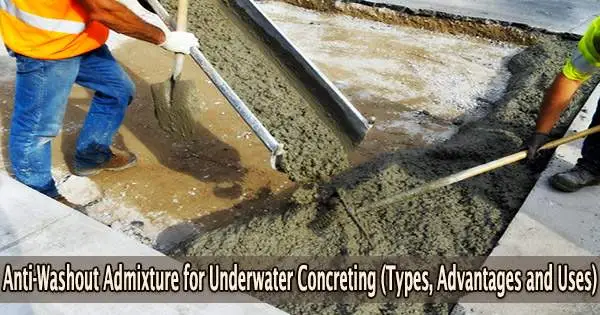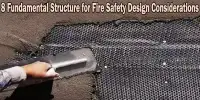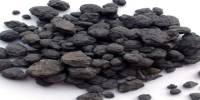To improve the rheological characteristics of cement paste, anti-washout admixtures of concrete are created for underwater concreting. It is mostly made up of microbial polysaccharides like gum or derivatives of polysaccharides like hydroxyethyl cellulose and hydroxypropyl methyl cellulose. It has been shown that the Antiwashout additive has a significant impact on improving the cohesiveness of concrete that has been placed underwater and is at risk of washout or segregation from the surrounding water.
It is also unquestionably the most widely used combination in extensive repairing and placing applications. When making self-compacting concrete, the Antiwashout additive, also known as viscosity enhancing admixture, is occasionally used. The benefits, drawbacks, classification, and application of Antiwashout admixture will all be covered in the sections that follow.
Dosage of Anti-Washout Admixture for Underwater Concreting
According to the needed flowability, the depth of the underwater placement, the horizontal flow distance, the water to cementitious materials ratio, and the amount of cementitious materials to be used, the amount of Antiwashout additive that must be added to the concrete mixture is specified.
Classification of Anti-Washout Concrete Admixtures
It can be divided into the following classes:
Class-A Anti-Washout Admixtures
a natural and synthetic organic additive that is water soluble and increases the viscosity of the water used for mixing. This class applies to cement with a solid content of 0.2% to 0.5% by mass. Examples of Class A anti-washout admixtures include those that contain cellulose ether, pregelatinized starches, carageenans, polyacrylamides, polyethylene oxides, alignates, carboxyvinyl polymers, and polyvinyl alcohol.
Class-B Anti-Washout Concrete Admixtures
By enhancing the attractions between cement particles, organic flocculants that may dissolve in water and be absorbed by cement particles increase viscosity. The dosage ranges from 0.01 to 0.10 percent of cement that is solid by mass. Examples of Class B are Styrene copolymers with carboxyl groups, synthetic polyelectrolytes, and natural gums.
Class-C Anti-Washout Concrete Admixtures
Emulsions of various organic materials are what give the cement paste its incredibly small particles in addition to improving particle attraction. The amount of Class C anti-washout admixture that is usually added it ranges from 0.10 to 1.50% solid by mass of cement. Paraffin-wax emulsions that are unstable in the aqueous cement phase, acrylic emulsions, and aqueous clay dispersions are examples of Class C anti-washout admixture.
Class-D Anti-Washout Concrete Admixtures
These are large surface area inorganic materials which rise mixture capacity to retain water. The dosage range employed is 1-25% solid by mass of cement. Examples include bentonites, pyrogenic silicas, silica fume, milled asbestos, and other fibrous materials.
Class-E Anti-Washout Concrete Admixtures
It is inorganic materials which provide extra fine particles to the mortar pastes. The mount of the Class E that is added is between 1 to 25% solid by mass of cement. Fly ash, hydrated lime, kaolin, diatomaceous earth, other raw or calcined pozzolanic materials, and various rock dusts are examples of Class E Antiwashout admixture.
Advantages of Anti-Washout Admixture for Underwater Concreting
In order to submerge concrete underwater without segregation and bleeding, it is added to the concrete mixture. The rate of concrete dispersion is reduced as anti-washout additive amount is increased, which is advantageous when concreting underwater.
Disadvantages of Anti-Washout Admixture
Decreasing strength and modulus of elasticity dependent on concrete batch design, water to cement ratio, amount of additional anti-washout admixture, and its kind are the most notable drawbacks of anti-washout additive.
According to reports, the compressive strength and elastic modulus of concrete having anti-washout admixture are 75–100% and 80–100%, respectively, greater than those of concrete without the additive. Consequently, small amount of reinforcement bars may be increased in reinforced concrete member.
Principal Considerations for Anti-Washout Concrete Admixtures
When anti-washout additive is added to concrete mixture, there are a number of practical issues that must be taken into account. The amount of concrete mixture that must be handled and the mixer’s capacity may be the most important factors to take into account. This is due to the anti-washout additive significantly increasing the viscosity of fresh concrete, which raises the load of fresh concrete by 25 to 50%.
To reduce the water demand of concrete mixture, which is enhanced by the addition of anti-washout admixture, and hence maintain flowability, high range water lowering admixture is frequently applied in combination with anti-washout admixture. Because the high range water reducing admixture lengthens the setting time, it is important to take into account the types and dosages of high range water reducing admixtures.
Another factor that must be taken into account is the pump’s capacity. On the one hand, if problems are discovered within the pressure transmission tube during the pumping pressure period, high dispersion resistance blockage may develop in pump lines. However, the pressure transmission resistance is enhanced by 2 to 4 times more than with traditional concrete due to the high viscosity of the concrete mixture.
















